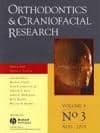5/16/06
A study lead by a researcher from the University of Buffalo’s School of Dental Medicine, in Buffalo, NY, suggests that people whose recurrent headaches have been diagnosed as tension-related may be actually suffering from temporomandibular muscle and joint disorder, or TMJD.
“Knowledge about the intersection between jaw pain and headache is not well established, and consequently, jaw pain may be ignored in the differential diagnosis,” says Richard Ohrbach, DDS, PhD, University of Buffalo associate professor in the Department of Oral Diagnostic Sciences. “This can be most unfortunate for the individual, because TMJD can be very treatable, but if a jaw disorder is ignored, then treatment for the headache may not address all of the factors contributing to the headache.”
The study involved 583 participants—82.3% female and 17.7% male—who were recruited as cases from the community based on the presence of symptoms associated with TMJD. Based on International Headache Society criteria, 31.5%, or 152 participants, were diagnosed with tension-type headache by the examiners.
The study compared the diagnostic procedures for pain and the reproduction of “pain” vs. “headache” during the clinical examination. Procedures included a range of functional and orthopedic tests and standard pain sensitivity to pressure applied to the muscles associated with headache. The types of headaches considered included sub-clinical headaches, tension-type headaches, and headaches exhibiting more symptoms than are accepted for tension-type headaches, such as the “mixed headache,” migraine or “migraine-type” headaches.
The study is part of an $8 million project funded by the National Institute of Dental and Craniofacial Research, to establish valid and reliable TMJD diagnostic criteria. Results will advance the field of TMJD research and aid clinicians in their practices.









